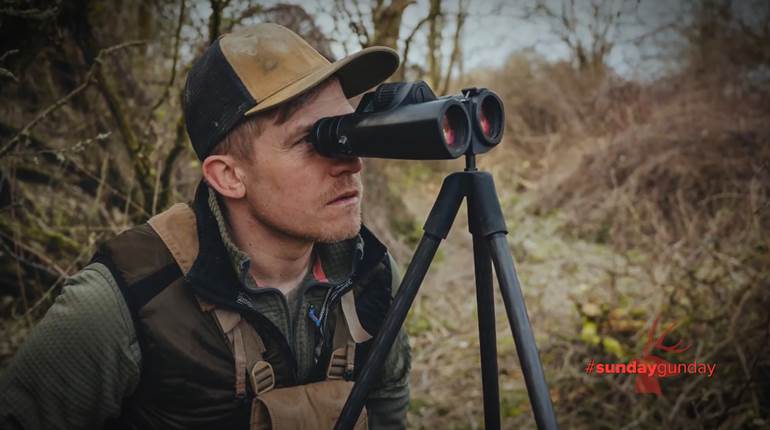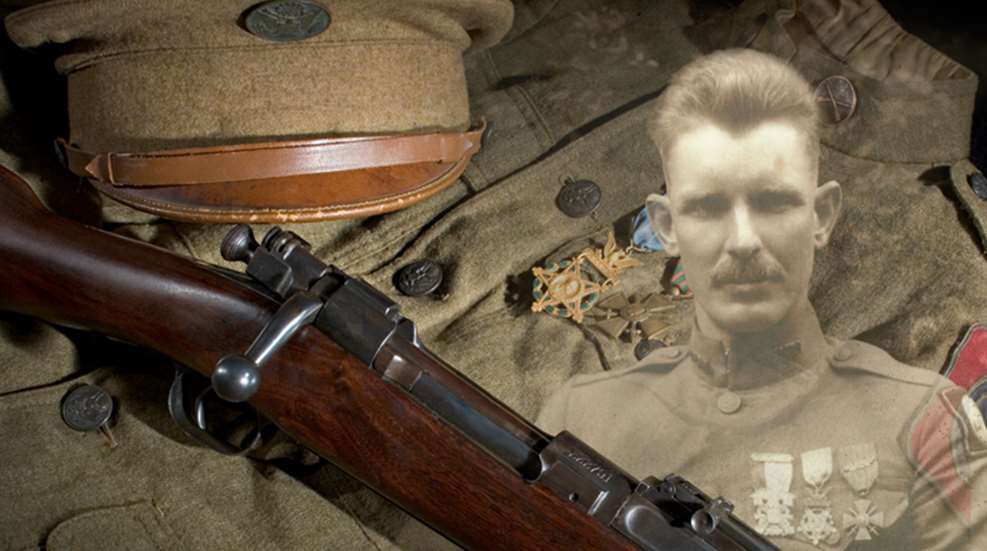
This article was first published in American Rifleman, March 2005
With the anniversary of America’s entry into World War I approaching the century mark, only a few veterans of that conflict are still with us. It is rapidly slipping from the public’s consciousness, and many probably could not even tell you why it was fought or who the combatants were.
This is especially troubling when it comes to the heroes of the Great War—for it was one of the most terrible conflicts ever experienced by man. Conditions at the front were terrible. Slaughter on a mass scale was commonplace. Still, there were incredible acts of valor on both sides. One of the most incredible, not only of World War I, but of all the wars the United States has fought, involved a modest Tennessean who, using his native intelligence and feats of marksmanship skill, performed what was described by French Commanding General Ferdinand Foch as “… the greatest thing accomplished by any private soldier of all the armies of Europe.”
Born in Pall Mall, Fentress County, Tenn., in 1887, Alvin C. York was the third child in a family of 11 children. His grandfather was one of the original long hunters of Tennessee and his father was a blacksmith who carried on the family hunting tradition—sometimes to the detriment of his business.
Alvin took to shooting like he was born to it—which in fact he was—and often skipped school to help put meat on the family table. His usual hunting gun was his father’s flintlock Kentucky rifle—an arm that was common in the mountain country. Usual game included red and gray foxes, squirrels, wild hogs, raccoons, deer and bear. Even in his early years he was reckoned to be something of a crack shot and was more often than not the winner in local beef and turkey shoots.
In 1911 his father died, and Alvin later said he “sorter went hog wild” and took up gambling, drinking and carousing in the “blind tiger” drinking shacks along the Kentucky-Tennessee state line. During his forays, Alvin often carried a small nickel-plated revolver along with him, often taking shots at targets of opportunity. Even with this unreliable little “flyapart,” he seldom missed.
York’s misadventures increased in frequency and ferocity, much to his mother’s dismay. She would constantly remind him how his father never drank, gambled or swore and told him that she was seriously concerned for his immortal soul should he be killed on one of his jaunts. York deeply respected and adored his mother, and soon began to take her words to heart. He visited a local fundamentalist church and, after long talks with the minister, finally came to this realization. “When you miss the finer things in life you might just as well be a razorback out in the mountains for all the good you are to yourself or anyone else.”
Making a major turnaround, York joined the Church of Christ in Christian Union, which believed that the Bible was the revealed word of God, and that it should be taken literally and not be deviated from. He took his religion seriously and soon became a regular figure at the church, teaching Sunday school and joining the choir.
York began seeing an old childhood acquaintance, Gracie Williams, and soon things developed into a full-fledged romance. The pair would make excuses to meet—Gracie going out to milk the cows and Alvin just happening to stop by during one of his hunting trips.
All was moving along well for the lanky redheaded mountaineer. He had taken up his father’s trade of blacksmithing and was becoming something of a success of the business. Hunting and shooting helped put meat on the table, he had gained new respect in the local community, and he was head-over-heels in love with “Miss Gracie.”
It is unlikely that Alvin had ever heard of the Bosnian city of Sarajevo, but on June 28, 1914, the assassination of an Austrian archduke by a member of an extremist separatist organization would change his life in ways that he could not possibly comprehend. Soon Europe was embroiled in an all-out conflagration, and three years later President Woodrow Wilson declared war on Germany. The United States had entered the Great War.
Though it took a bit of time for the news to reach Pall Mall, when it did, many of the local men could hardly wait to join the service. Not so Alvin, who had serious reservations about taking another person’s life. It was all pretty simple—the Bible says, “‘Thou shalt not kill,’ and that’s all there was to the matter.” As he later wrote, “Everything was going from under me. Fight! Kill! And I’d been converted to the Gospel of peace and love … .”
York decided to file a petition with the local draft board as a conscientious objector—but the officials weren’t having any of it and denied his application, stating, “The Church of Christ in Christian Union is a well-recognized religious sect … [that] has no special creed except the Bible, which its members more or less interpret for themselves, and some do not disbelieve in war—or least there is nothing to forbid them to participate.”
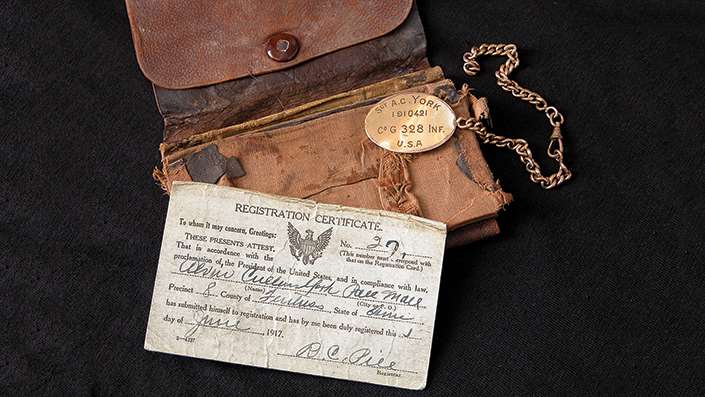
Alvin appealed, and was again turned down. In short order he was drafted and sent to Camp Gordon, Ga., for training. He was assigned to Company G., 328th Infantry, 82nd “All-American” Division. York performed his duties with a heavy heart. His despair deepened. Finally he could stand it no longer and he visited his company commander, a fellow Southerner, and told him of his concerns about taking another human life.
His captain sent him up the line to the battalion commander, Major Edward Buxton, Jr., a Rhode Island Yankee. After several talks, Buxton believed in York’s sincerity and allowed him a 10-day pass to go home to Pall Mall and think things over. At home, in his beloved mountains, York began to think more clearly and decided to take the matter to the ultimate authority. After considerable prayer, he felt that he had, “received the word” and been given permission to “go to war and even kill and yet [God would] not hold it against me.”

York continued his training, and established himself as the company’s best shot with his issue .30-’06 Model 1903 Springfield. Later commenting that the rifle was not as good as his “hog gun” out to 100 yds., he did admit that it was probably better at greater ranges. After the nasty job of cleaning the cosmoline out of his rifle he wrote in his diary, “Well, they give me a gun and oh my that old gun was jes full of Greece [sic] and I had to clean that old gun for inspection. So I had a hard time to get that gun clean.”
Following training, York’s unit was moved to Camp Upton, N.Y., in preparation to be sent overseas. After several days of drilling, the men were put aboard a freighter bound for Le Havre, France, after a stop in England.
Upon arriving at Le Havre, the 82nd was issued .30-’06 Sprg. U.S. Model of 1917 “Enfield” rifles. According to York’s son Andrew, his father didn’t much cotton on to the M1917 as it had a peep sight with which York had difficulty leading a target. Somehow he finagled to swap his issue rifle out for a Model 1903 Springfield—a gun he had found much more comfortable.

After more training, his unit was finally ordered to the front lines. York kept his Bible close at hand, just to assure himself that he was doing the right thing. All during his overseas duty, he kept up a continual correspondence with his sweetheart, Gracie, filling her in on the exotic sights and scenes of Europe, as well as with details of his training and subsequent action.
Promoted to corporal, York saw his first fighting in the Montsec region where he was in charge of a squad armed with French Chauchat machine guns. His comment seems to echo those of many other Americans to whom the things were issued, “They were big and clumsy. They were too heavy. They were not accurate or silent. You could never be sure what you fired at no matter how good a shot you were. All you could do with them was make a lot of noise.”
Eventually his outfit was sent to the Argonne Forest. Large areas had been continuously pounded by German guns and the area was a quagmire of mud, dead horses and battlefield litter. York described the area as a scene of “Abomination and Desolation.”
Following spirited action, the soldiers were eventually assigned to Hill 223 which was to be the staging area for an attack on the Decauville Railroad, about three kilometers away.
Though they were to have been given artillery support, orders became muddled and the men had to make their advance without it. As soon as they went over the top, German machine guns opened up with plunging fire, pinning down the advancing Americans and killing scores of them as soon as they emerged from cover.
Following a plan by Sgt. Bernard Early, York’s squad and two others were detailed to advance on the machine gun emplacement on their left front. The 17 men managed to work their way behind German lines, and, because they couldn’t really see their objective, decided to move toward the sound of the fire.
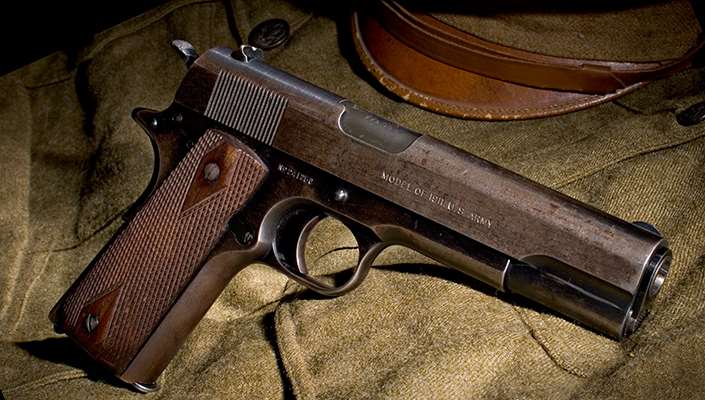
As they crossed a small stream, the squads surprised a detachment of orderlies, stretcher-bearers and runners who immediately surrendered. Suddenly German machine guns opened up, severely wounding Sgt. Early and two other corporals. York, now in command, was caught in the open about 25 yds. from the gun emplacements. Dropping down, he carefully eased his Springfield forward, and—as soon as a German gunner would raise his head—he would fire. As soon as he was able, York rose from concealment and began shooting rapidly from the standing position. After going through several five-shot clips of ammunition, he began to run low. Suddenly a German officer and five men charged him with fixed bayonets. Having only a couple of rounds in his rifle, York drew his Colt Government Model 1911 .45, ticking them off back to front in the manner he hunted ducks back home in Tennessee. Andrew York recently told the author that this was, indeed, the “way Daddy hunted ducks with his Remington Model 11 automatic shotgun and that he never missed.” In this manner he finished off his assailants, ending up with the officer who was in the lead, and who was probably unaware that he was ultimately attacking the rangy corporal all by himself.
Alvin continued shooting at the machine gunners with his .30-’06, shouting at them to surrender. Finally a German officer signaled for a parley and was surprised to find out his attacker was a Yank, thinking at first he was British. He turned his P.08 Luger over to York and agreed to surrender his men if York would stop shooting. Alvin agreed, covering the prisoner with his M1911 while about 50 men emerged from the emplacement. One German tossed a hand grenade at York’s head and, though it missed him, it wounded one of the other prisoners. He shot the grenadier, just to make sure the others would come along with no trouble.
When the captives were rounded up, York called out to his men to move out. One private expressed his concern that it would be difficult to get the prisoners back to American lines with so few guards. The German officer, overhearing the conversation, asked York just how many men he had, to which the corporal replied, “I got a plenty.”
He had the prisoners carry the wounded and pointed his Colt at the major, forcing him to take the head of the column. As they proceeded, two other machine gunners moved into position to fire on the procession. York told the officer to order these men to surrender or he would blow his head off. By the time they reached battalion headquarters, York’s tiny unit had rounded up 132 prisoners. Later, when he reported to the brigade commander, Gen. Julian R. Lindsay, the general commented, “Well, York, I hear you captured the whole damned German army,” York corrected him, “Nossir, I only have 132.” When he was asked how he accomplished the deed, he replied with characteristic understatement, “I surrounded ’em.”
After investigating the action and receiving affidavits from eyewitnesses, a report to General Headquarters stated: “The part which Corporal York individually played in this attack (the capture of the Decauville Railroad) is difficult to estimate. Practically unassisted, he captured 132 Germans (three of whom were officers), took about 35 machine guns and killed no less than 25 of the enemy, later to be found by others on the scene of York’s extraordinary exploit.
“The story has been carefully checked in every possible detail from Headquarters of this Division and is entirely substantiated. Altho[ugh] Corporal York’s statement tends to underestimate the desperate odds which he overcame, it has been decided to forward to higher authority the account given in his own words. The success of this assault has a far-reaching effect in relieving the enemy pressure against American forces in the Argonne Forest.’”
For his exploit, York was awarded, among other decorations, the Medal of Honor, the Tennessee Medal of Valor, the Croix de Guerre (France) and the Croce de Guerra (Italy.)
After making the rounds of Allied bases in Europe, York was sent back home where, upon his arrival in New York, he was given a lavish ticker-tape parade and was put up in a suite at the Waldorf Astoria. Besieged with offers to go on lecture tours and appear in movies, he declined them all, summing up his objections by noting, “Wouldn’t I look funny in tights?” Unfortunately his 1903 Springfield and .45 ACP M1911 were lost or stolen enroute to the United States and remain missing to this day.
York eventually returned to Pall Mall, where he was presented with a home by the state of Tennessee—a site that remains unchanged to this day and which has become a Tennessee State Landmark still overseen by members of the York family. He married Gracie and finally accepted offers to go on a lecture tour, the proceeds of which went to establish the Alvin York Agricultural Center and a Bible school.
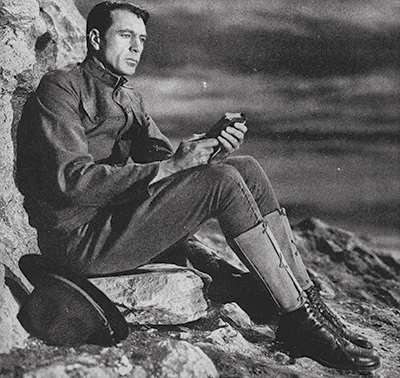
In 1941, a movie, “Sergeant York,” starring Gary Cooper, was made about York’s life. Alvin went to Hollywood to act as technical advisor, and according to Andrew, it is just about as close to fact as it is possible to make a movie. In the film, Cooper used an M1903 Springfield, but because period .45 blanks were just not reliable, a Luger was substituted for his 1911. Andrew is careful to point out, however, that his father did get a P.08 from the German officer he captured. The movie became a major hit, garnering Cooper a best-actor Oscar and netting $250,000 for the institute and Bible school.
When the Second World War began, York made many tours to sell bonds and to boost morale. In 1945, he went back home and, 10 years later suffered a cerebral hemorrhage. As well, the government hit him with a whopping bill for back taxes, and though he fought it, he still was eventually forced to pay $25,000. As he had given most of his money to the agricultural institute and Bible school, he was forced to rely on public subscriptions to pay the bill.
Alvin C. York died on September 2, 1964. His wife Gracie followed him a number of years later, and today they lie side-by-side in a beautiful little cemetery in Pall Mall. Despite requests to move his remains to Nashville, the family has no intention of taking the hero away from his beloved mountains. According to Andrew, “That’s what Daddy would have wanted.”
Alvin York stood out in a time that was not lacking for heroes. He was a straight shooter in every sense of the word, and his courage, faith and love of country are standards that, for the majority of Americans, we can hope will never go out of fashion.
The editors wish to thank the National Firearms Museum for the loan of the firearms, Martin Lederman [(Dept. AR), 21 Naples Road, Brookline, MA 02446; (617) 731-0000] for the loan of the World War I Medal of Honor, and Croix De Guerre and Rick Keller of Great War Militaria [greatwar.com] for the loan of the World War I 82nd Division uniform.
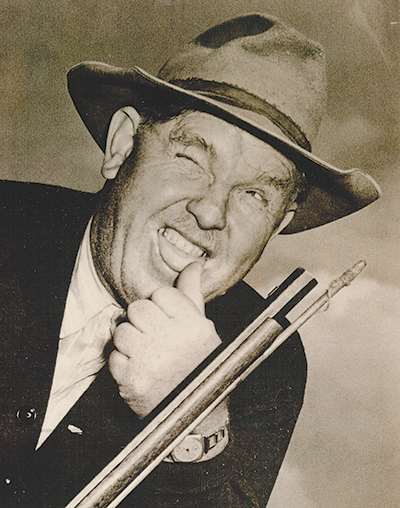
Sgt. York’s Other Guns
Alvin C. York was an avid shooter. Most of the guns he owned, and the ones that are currently in the possession of the York family, reflect his lifelong love of hunting and target shooting.
Probably the gun he used more than even his percussion longrifle—which is on display in Nashville—was his Remington Model 11 semi-automatic 12-ga. shotgun. York’s son Andrew remembers going duck hunting with “Daddy” and watching his father pick the ducks off from rear to front, in the same manner he shot Germans in the Argonne. York also owned a 10-ga. Winchester Model 1901 lever-action shotgun, but it was presumably retired when he got his Model 11.
Andrew tells of how his father was able to shoot doves on the wing using a Winchester Model 74 .22 autoloading rifle—another of his favorite guns. During my visit with the York family, I also was able to view a Winchester Model 92 in .25-20 Win., as well as a .32 ACP CZ Model 24 semi-automatic pistol. The former was presumably used for larger game such as deer and hogs, while the latter, according to Andrew, was carried by York occasionally for self-protection. He has no idea where the CZ came from.
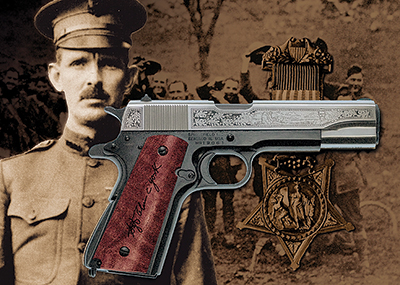 Sgt. York Special Edition M1911
Sgt. York Special Edition M1911
In an interesting joint project, Investment Arms, along with Springfield Armory and American Forests, has come out with with an interesting new commemorative Government Model-style .45 semi-automatic pistol honoring Sergeant Alvin C. York. The basic pistol is supplied by Springfield, enhanced by Investment Arms with scenes of York’s life and other pertinent motifs, and fitted with black walnut and cherry wood grips from the birthplace of Sergeant York, under the auspices of American Forests. It’s offered in Peerless and Issue Grades.
The Peerless is decorated with 24-karat gold, jeweler’s-grade nickel and blue, while the Issue model is nickeled and blued. There will be 132 Peerless Grades made (the number of Germans captured single-handedly by York) and 5,000 Issue pistols. For more information visit the Investment Arms website, www.investmentarms.com, or give them a call at (888) 708-4867.












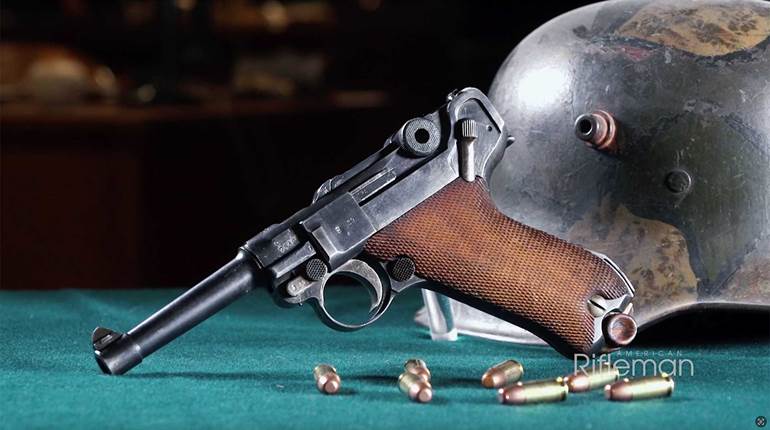
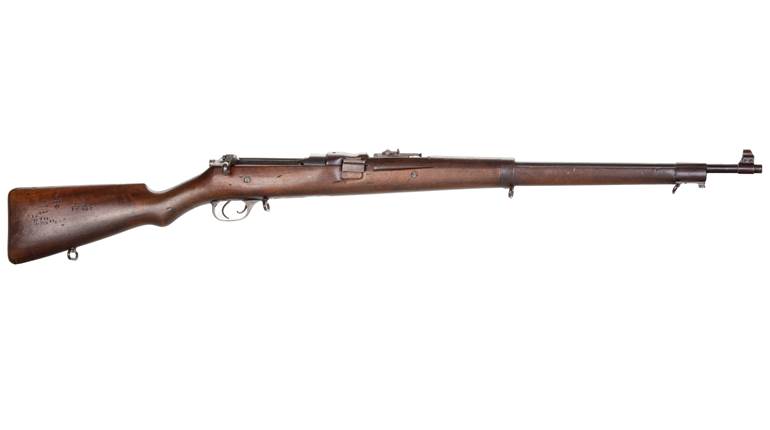
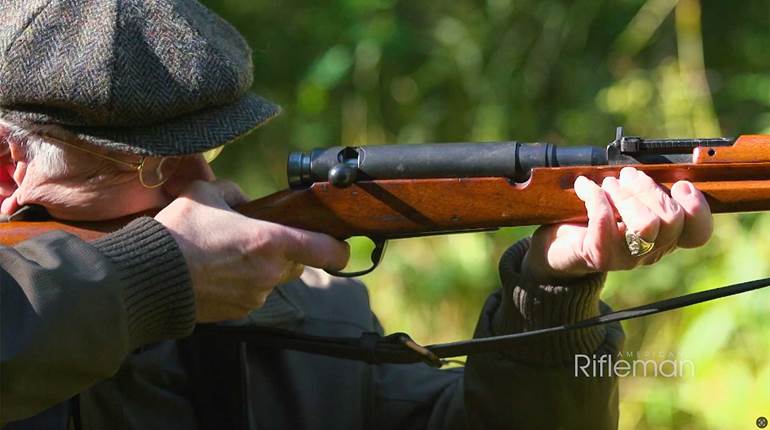



![Auto[47]](/media/121jogez/auto-47.jpg?anchor=center&mode=crop&width=770&height=430&rnd=134090788010670000&quality=60)
![Auto[47]](/media/121jogez/auto-47.jpg?anchor=center&mode=crop&width=150&height=150&rnd=134090788010670000&quality=60)







